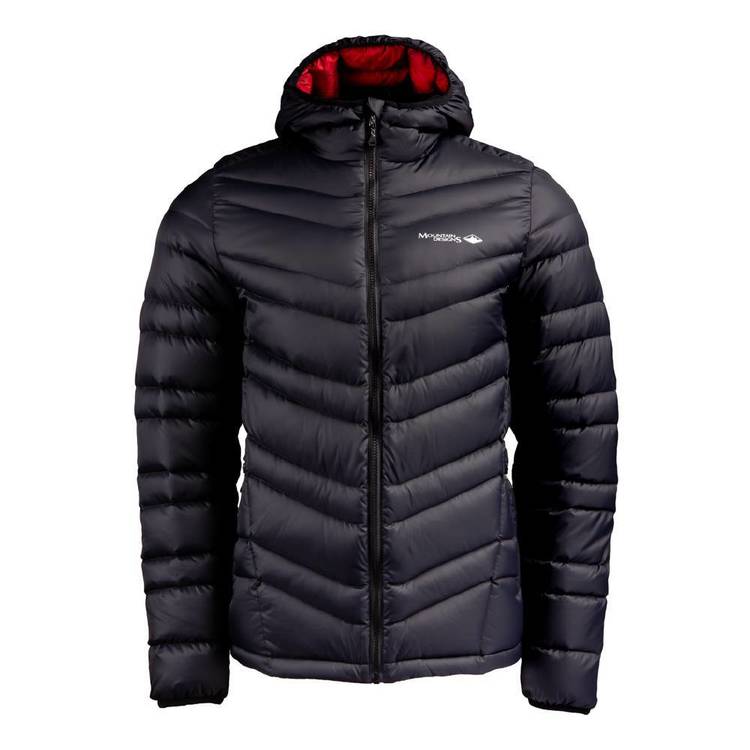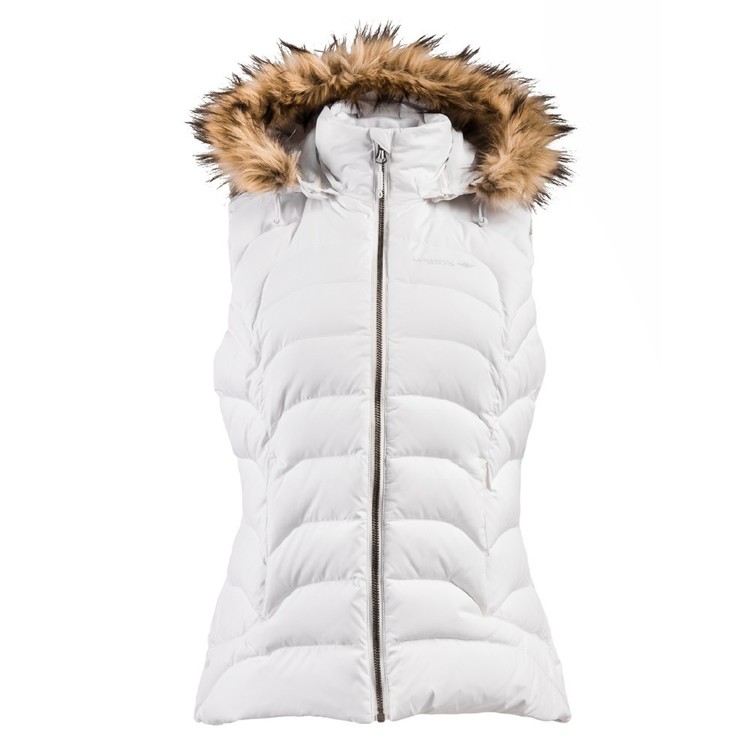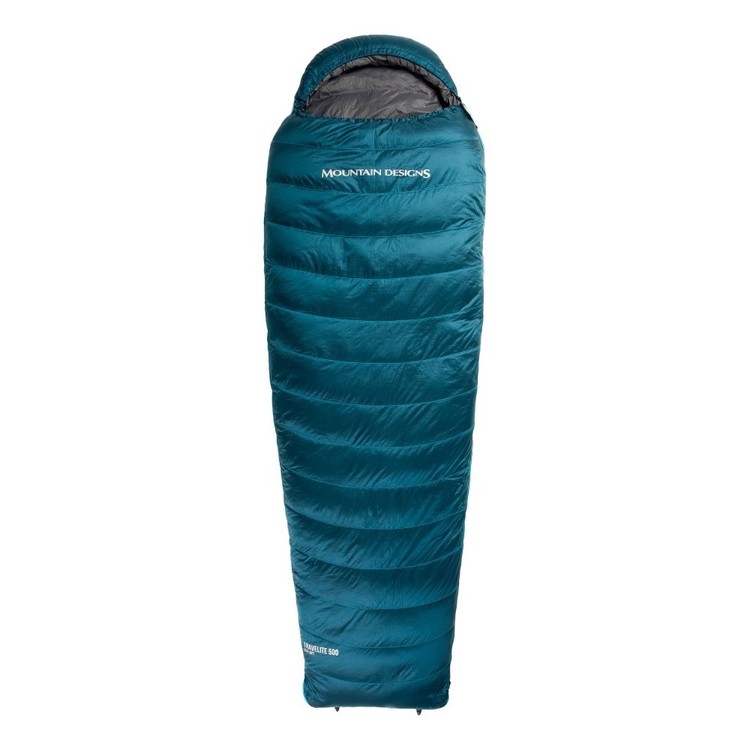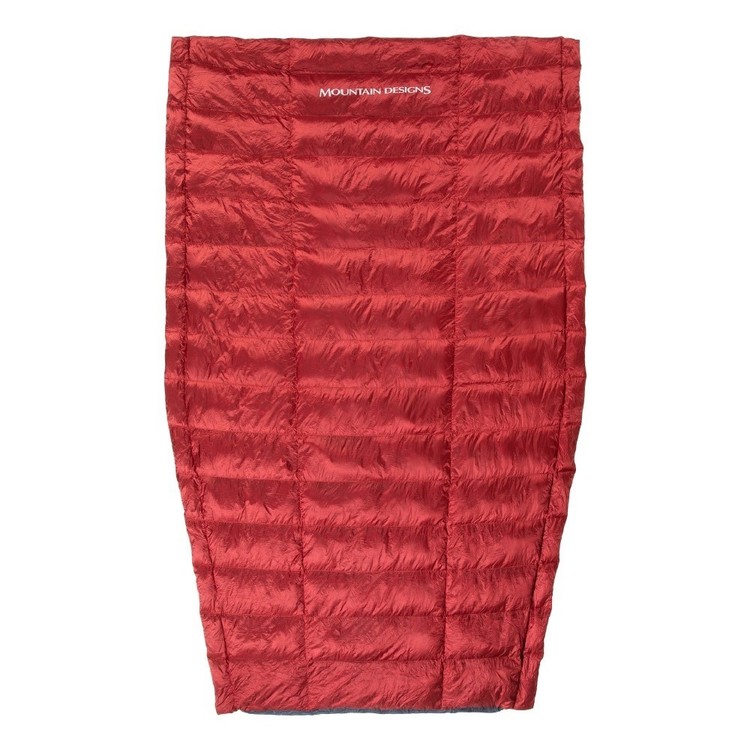| Your browser is not supported. | ||
|
Please browse our site using any of the following options:
| ||
Getting The Low Down On Down

Down is mother nature's best insulator, with an exceptional warmth-to-weight ratio that makes it perfect for exploring cooler climates. Whether used in jackets, vests or sleeping bags, down makes your gear lightweight, highly compressible, but most importantly, super warm. Here we dive deep into all things down, so you can better understand why explorers the world over have been trusting its performance for years.
What is Down?
Down insulation is made from goose or duck down, the lofty, fluffy layer found underneath the feathers and predominantly around the chest area. Down is commonly mistaken for the feathers but in actual fact is the bird’s undercoat, effectively a natural mid-layer. Each down cluster provides warmth by trapping thousands of tiny air pockets within its barbs, and is also incredibly breathable, which allows unwanted moisture to escape. These qualities make down an effective insulating fill for jackets, vests sleeping bags.
Loft Rating
The thermal performance of down is rated by its 'Loft Rating' or 'Fill Power', a numerical measurement for the amount the down expands and traps air within its clusters. This rating indicates how many cubic inches one (1) ounce of down can fill inside a laboratory container. Typically, fill power ranges from 450 to as high as 900, with 900 being the warmest and lightest, but also the most expensive. The quality of the down is directly related to its loft rating - the higher the fill power, the better the down will insulate because there is less chance of cold spots forming. Our Mountain Designs Peak 700 Down Jacket has our highest fill power, with a loft rating of 700.
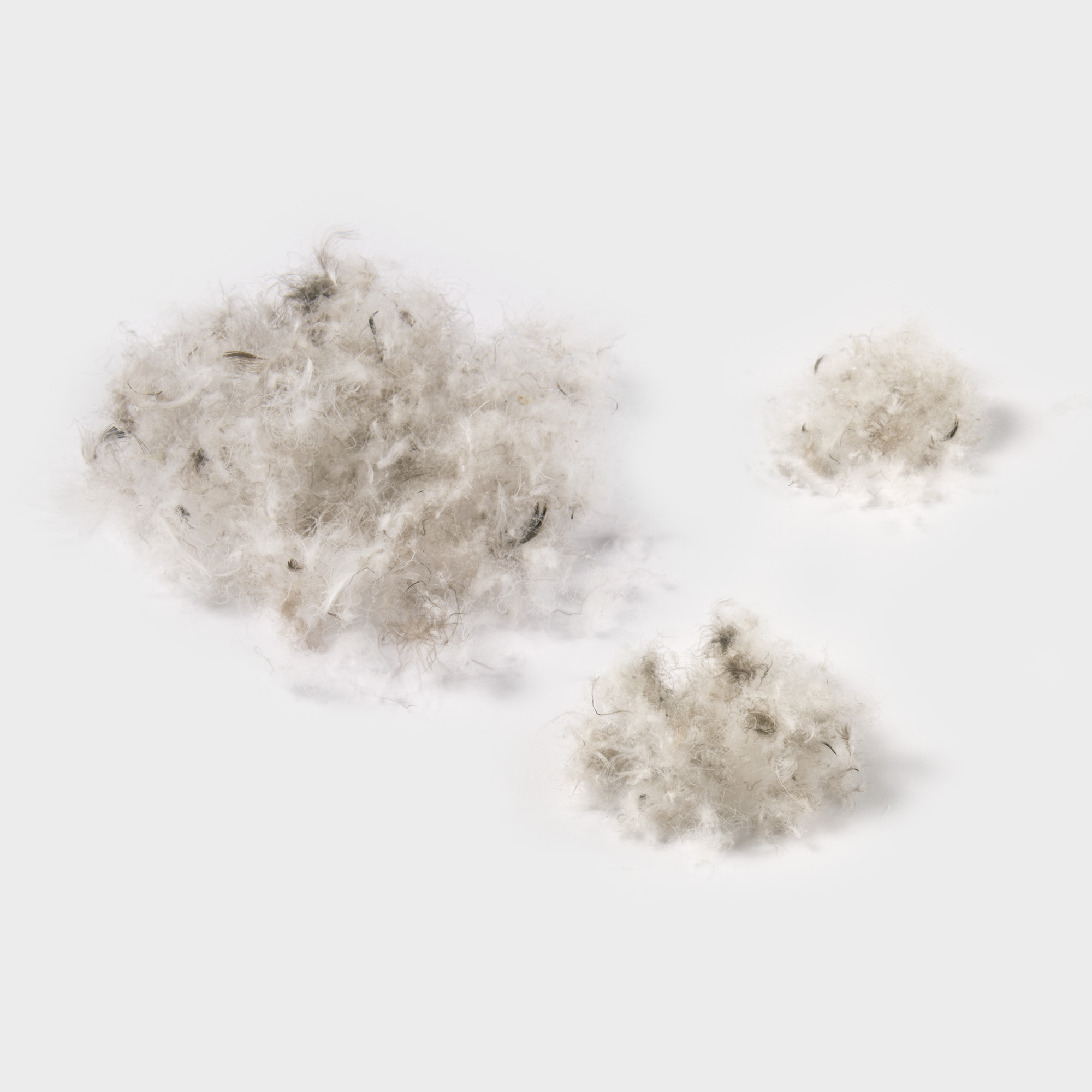
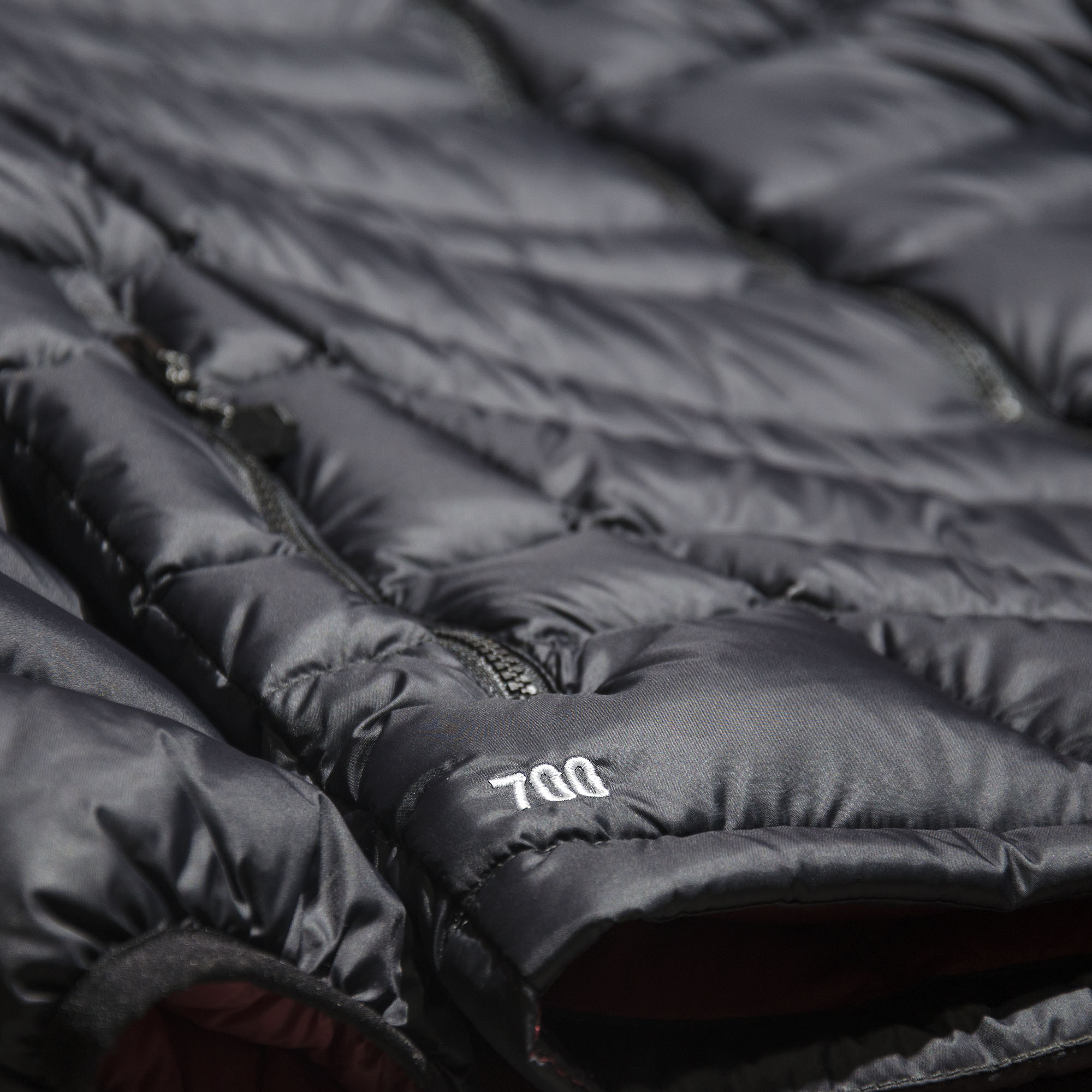
Down Ratio
Along with the testing the loft of the down, down ratio tests are also carried out to identify what is mixed in with the down clusters, such as feathers. Australian Consumer Law requires that the down-to-feather ratio is printed on the product's care label to specify the contents of the insulation. Cheap down-filled items will use low down-to-feather ratios, for example 70:30, while higher-performing down will have a ratio of at least 80:20. The better the ratio, the better the loft value and the greater the down will then perform. For example, the Mountain Designs Resurge 700 Down Jacket has a 90:10 down-to-feather ratio.
Duck v Goose
There are basically two types of down - duck down and goose down. Both are available in grey and white versions, however colour does not affect performance - it is simply an aesthetic choice in the design process. The main difference between duck down and goose down is that goose down will generally have higher loft values and larger down clusters. While goose down has traditionally been the preferred choice for performance, with improved down and feather sorting methods, duck down can now perform just as well, if not better, than goose down.
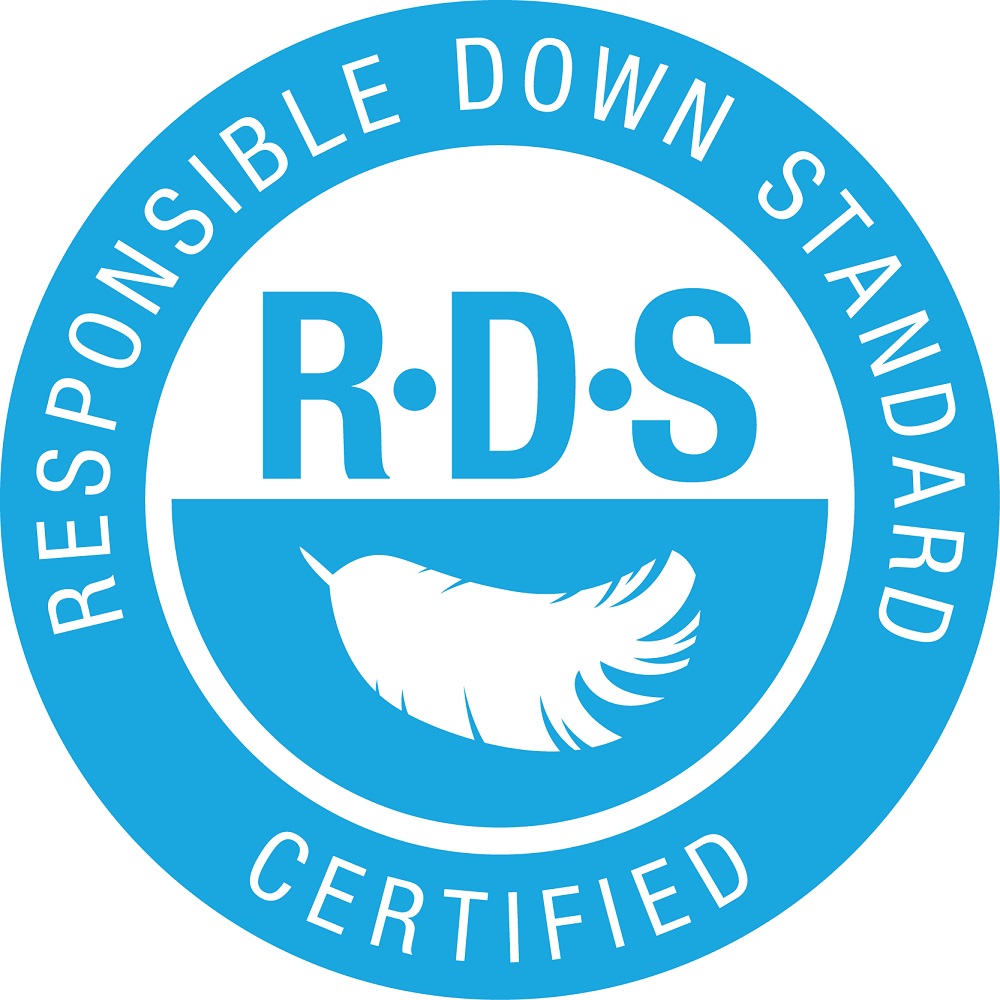
RDS-Certified Down
The Responsible Down Standard (RDS) is an independent, voluntary global standard that safeguards the welfare of the animals - it guarantees that down and feathers come from ducks and geese where no live plucking or force feeding is conducted.
The standard was developed with the input of animal welfare groups, industry experts, brands and retailers, and it follows the chain of custody from farm to product. Down used in all Mountain Designs down products is 100% RDS.
For more information, visit http://responsibledown.org/
Water Exposure & Down
In recent years, water-repellent down has become available. This is down that has been treated with a molecular-level polymer that can withstand mist or light moisture. For example, our UltraTek™ down sleeping bag range uses DownTek™ for improved performance in damp conditions. While these treatments do reduce the impact of low-level water exposure, as a general rule down shouldn't get soaked because this will negatively affect thermal-efficiency.
The Benefits
- Ounce for ounce, down is warmer than synthetic insulation.
- Down retains its shape and loft very well.
- Down is highly compressible, making it easy to pack away and store while outdoors.
- Down is a durable, resilient textile. With proper care, it will last for decades.
- High-quality down is cleaned very well according to strict industry standards, and is less likely to cause allergic reactions than low-quality down, which can harbour dust particles and debris.
Things You Should Also Know
- Down will lose its insulating power when it becomes wet, and takes time to dry out.
- Cleaning down products requires special care because harsh detergents and other chemicals will break down its natural loft and lustre. Only very mild detergents or down-specific cleaning products should be used.
- Down insulation can be more expensive than synthetic fill insulation.
Basic Care Instructions For Down
- Machine wash your down product with warm water at 40°C on gentle cycle, using pure soap only. Do not use bleach, fabric softener, conditioners or stain removers as they can affect the product's performance. Avoid a top loading machine with agitator as its washing process is too rough.
- Rinse thoroughly. Your down jacket or sleeping bag will be heavy when wet so take care handling it. Ideally, dry it flat and avoid wringing it to remove excess water.
- Do not dry clean or iron your down product.
- Loft can be restored by tumble drying the down product on low or no heat with some tennis balls. The tennis balls will help to break up the down clumps and fluff up the down clusters. Shaking will also help to restore the loft.
- Down jackets and sleeping bags, while easily compressible, should be stored hanging up, and not left compressed or bundled up for long periods of time. This helps to keep the insulation spread evenly, and maintain loft.
The Bottom Line
Down is Mother Nature's best insulator. It works well for almost everyone, providing incredible warmth with minimal weight. It's also highly compressible and has good longevity if properly cared for. Down is great in cold, dry conditions and has long been popular with adventurers because it delivers reliable comfort and protection, and stands the test of time. To feel the benefits of this high-performance insulator, shop our extensive range of down jackets and vests, and sleeping bags now.
